Don Nuco: The Desert Weaver

I came to the Ciudad Juárez ejido in Lerdo because I was told that a certain Arnulfo García, a desert weaver, lived here.
“ Your hands are the memory of an ancestral craft that is dying ,” they told me.
The image strikes me as Rulfo-esque: the astonished man wearing a hat works at ground level in the courtyard of his house. Don Nuco, as he is also known, is a resident of a dusty village that preserves the memory of the last natural fiber weavers of La Laguna.
Only he, and two other men, transform fibrous plants into utilitarian or artistic objects. They are the voices of a desolate tradition, like Juan Rulfo's Comala...
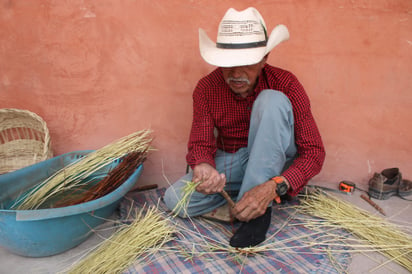
“ Fifty years ago, there were about 14 of us artisans. Now there are only three of us left. "Don Nuco tells me, while he plants his knee on the floor and with his shoeless left foot he shapes the cross out of a basket made of dried willow branches.
With his gaze focused on the braiding, Don Nuco moves his fingers as if, instead of bones and tendons, he had a living memory. I sit opposite him and am amazed to see how a handful of dry sticks take shape in time with his hands.
She is 76 years old and has dedicated herself to the art of creating useful or decorative pieces using natural fibers extracted from plants since she was 15.
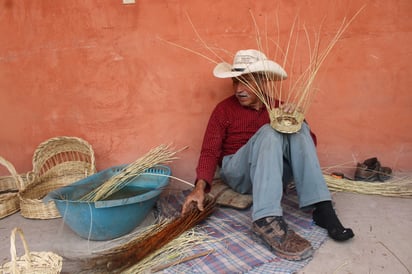
I'm in his world, one woven by hand. Here, where each dry stick tells a story rooted in the earth, here amidst a sepia-toned atmosphere, Don Nuco prepares to tell me his.
AN ANCIENT TRADEAs I watch him weave, I think of his hands as a living archive . Tanned by the sun and time, they hold the memory of an ancient craft, one that dates back to pre-Hispanic times, when various indigenous peoples developed weaving techniques using materials such as palm, ixtle, tule, and reed.
These fibers, collected from the natural environment, were transformed into objects essential for everyday life: mats, hats, baskets, rugs, and satchels.
According to Sanjuana Rosalba Rosales Reyes, head of the folk art registry at the Durango Regional Unit of Popular Cultures, this craft has been documented since before Christ, although, she acknowledges, its physical traces are scarce.
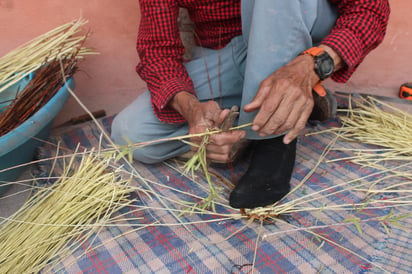
" Because it's an organic material, the pieces decompose quickly. What remains are records in codices or graphic representations."
Five hundred years later, Don Nuco keeps this practice alive by working with willow, tamarisk, and wicker. A woman named Anita taught him to weave, and the connection with the craft, he tells me, was immediate.
“ I really liked it, and I worked harder at it than in the fields. When I started, they paid seven or ten pesos for a hoe. And I made a baby chair and sold it for fifteen. So I said, 'No, I'd rather do this. I'm in the shadows, I do my thing, and I earn more .'”
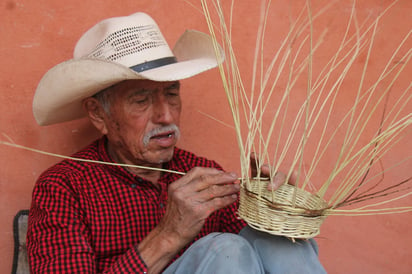
He earned more, it's true. But everything changed. Today, the desert weaver fights against oblivion.
A DISAPPEARING ARTIndustrialization, lack of water and the lack of interest of the new generations have put this trade on the brink of extinction .
Rosales Reyes confirms that, in the Comarca Lagunera of Durango, "we have a very low number of plant fiber artisans. There are only three people left who make it, and in Torreón, San Pedro, or Matamoros, we haven't found anyone who works with it."
In other parts of the state of Durango, however, such as Nazas, Peñón Blanco, Rodeo, and Canatlán, the practice still persists, especially in communities near bodies of water.
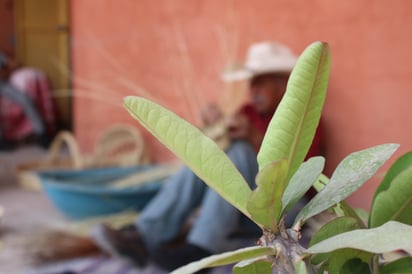
" These materials need a lot of moisture to grow. They come from trees and shrubs, which are becoming increasingly scarce ," the cultural promoter explained.
Although the raw materials are no longer available in Ciudad Juárez, where Don Nuco lives, the human resources remain. “ The problem is that one of the artisans died last year, and there are fewer and fewer of them left ,” lamented Sanjuana Rosalba.
The name of that artisan was Martiniano González Cruz. He inherited his grandfather's knowledge and, in his lifetime, dedicated himself to weaving and preserving the tradition of an art that, although still alive, as previously reported in this article, is currently in its death throes.
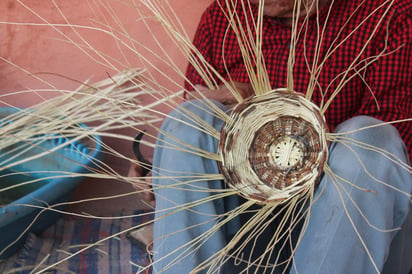
Don Nuco's work has great cultural value because, among other things, it is a hallmark of his community. He knows that the craft has been practiced for at least five generations, and although he tries to preserve it by continuing to practice it, the environmental narrative has him tied up.
“ The material is almost gone. Forty years ago, people used to go right here. But then they built the thermal power plant… and it all dried up. It sucked up the water. All the trees are drying up .”
The "Guadalupe Victoria" thermoelectric plant, which the artisan speaks of, has been in operation for more than three decades. It is estimated to consume around 4.5 million cubic meters of drinking water per year, extracted from wells originally intended for human consumption. Its environmental impact in Ciudad Juárez has been devastating.
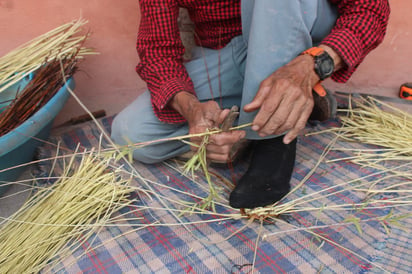
“ The forest is dying out .” So now the 76-year-old must organize long and expensive trips to obtain the raw materials. “I used to take the bus. But on the last trip, I felt I couldn't do it alone anymore.”
I sense a tinge of despair overcoming him. He points to the clump of dry sticks he has left and says, "With that, I'll barely be able to make two baskets."
Although his daughter promised she would take him to collect materials on Saturday, Don Nuco never knows for sure if he will be able to continue braiding dry branches tomorrow.
NO ONE WANTS TO KNIT ANYMOREI don't ask him, but I sense that Don Nuco knows there's not much hope. Everything is against him. He knows that if he's gone, at least in his family, no one will insist on weaving.
Perhaps he doesn't understand why, if being a weaver of natural fibers has given him many rewards, one of which was providing for his family, also, although it has happened to him little, the joy that fills him every time someone values and recognizes what his hands can do.
In this regard, the desert weaver recalled an anecdote: “ One Saturday, I was on a crowded bus. Then, a young man sat next to me and asked if I made these works, and I said yes. He told me they were very pretty and asked my permission to take a photo to show his mother. Then he gave me 300 pesos for my sodas. I told him no, that it was too much, but he said, 'Take them. I make a lot of money, and your work deserves it.' And well, I took them .”
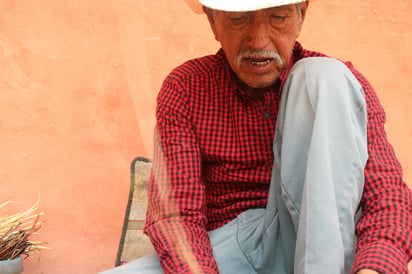
He laughs, and I can see his eyes sparkle. “ It’s nice to see someone like that appreciate your work.”
And besides the fact that their work is under-recognized, artisans aren't paid what their pieces are worth. He says he sells Moses baskets for 180 pesos, but they always want to pay 150 pesos. The same goes for the baskets. "You go around selling them, and they don't want to pay you the full price. They're always haggling."
Even with all that, it's clear that Don Nuco is happy weaving. "This work is beautiful. People don't appreciate it, but I'm proud of it. I'm not ashamed. I enjoy making it and going out to sell it."
Rosales Reyes points out that the lack of interest among younger generations in learning to weave with natural fibers is one of the most serious threats keeping the craft in suspense.
"The children of artisans no longer work in this field because it's not well paid. There's a lot of "malinchismo" (a kind of "malinchismo") and industrial competition. Furthermore, people don't know the story behind each piece, so they don't give it its proper value," he explained.
She speaks this way because she knows well about the arduous days they go out to collect the materials for weaving. Not long ago, she accompanied Don Nuco and Don Esteban González (Martiniano's brother) to collect dry branches.
There he learned that they start at 4 or 5 in the morning, and continue under the intense rays of the sun all day, and that's just to collect the raw materials.
“ And yet, they haggle over the pieces. It's very demotivating ,” Rosales Reyes lamented.
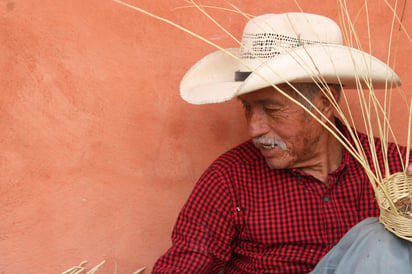
In Durango, the Law for the Promotion of Artisanal Activity remains in effect, a legal framework that, according to Sanjuana Rosales, was published in the Official State Gazette on September 6, 2015.
Its purpose is clear: to promote, protect, and disseminate the work of the entity's artisans. Within this universe of knowledge, the craft of plant fiber weavers stands out, whose labor, for Rosales, holds invaluable cultural value: " Each piece is unique. Although they may look the same, none are identical. Each artisan leaves something of themselves in each one ."
Just like the basket that Don Nuco, the desert weaver, finishes at the same time as his conversation with this newspaper, sitting there in the courtyard of his house, with his natural knife, his bare foot, but above all with the ancestral memory of his hands, the living archive of an ancient craft that preserves part of the cultural identity of his community.
elsiglodetorreon





